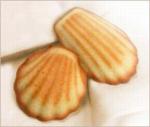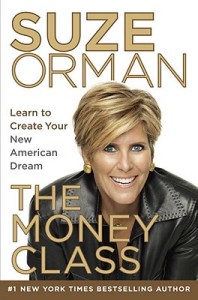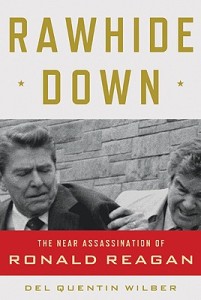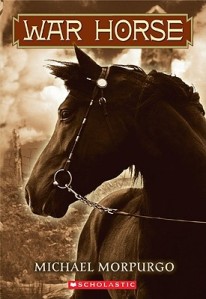I have to confess: I am confused about young adult literature. Sure, I remember being a “young adult,” back in the days of gaslight and corsets. But we weren’t marketed-to so much then. Ok, contemporary pop music was aimed pretty squarely at us in the 1980’s (how many adult humans were listening to Wham? I mean sober.). Fiction was not so determinedly focused on the too-young-to-vote crowd, though.
What is a “young adult novel,” anyway? We have a whole section devoted to them at the bookstore, so I will tell you what I have learned.
One hard-and-fast rule: Fiction geared for teens invariably has a teen main character.
The inverse is not true. If it were, no one over 12 would read Huckleberry Finn. Adults seem able and willing to read about protagonists of any age.
Rule two: Follow the money.
Adolescents today seem to be the only ones with disposable income. They buy books. They also buy music and movie tickets in far greater numbers than their adult counterparts. And it’s much harder for a parent to deny their child the funds to buy a book than to tell them no when it comes to films or music. Books are supposed to be good for you in a way that tunes and cinema aren’t. What that says about those other art forms is a whole ‘nother story…
So, publishers are happy to supply teens with all the books they can read. Bully for them! Sometimes it seems that if a book can be marketed to teens, it is. This isn’t exactly a new phenomenon. When Madeleine L’Engle wrote A Wrinkle in Time, she intended it for an adult audience. Her publisher thought it would be more popular as a children’s book. I loved this book as a kid, and find, having re-read it a couple of years ago – that it retains its appeal. It is truly a classic that both young and old can enjoy.
The Highest Tide, by Jim Lynch, was first published in 2005 as adult fiction, but was “repackaged” for young adults in 2007 and sold to bookstores as a teen read. I read The Highest Tide when it first came out and loved this coming-of-age story set in the Pacific Northwest. I gave it to teens then. I give it to them now. The “young adult” version is exactly the same text. It’s cheaper, less well made, and has a sort of bland cover. Go figure.
but was “repackaged” for young adults in 2007 and sold to bookstores as a teen read. I read The Highest Tide when it first came out and loved this coming-of-age story set in the Pacific Northwest. I gave it to teens then. I give it to them now. The “young adult” version is exactly the same text. It’s cheaper, less well made, and has a sort of bland cover. Go figure.
The volume of Young Adult fiction being produced right now is high. It sells, so there’s a lot of it, wonderful and otherwise. The great vampire bandwagon is still being enthusiastically jumped on. You cannot shake a stick without hitting a Gossip Girl spin-off or imitator. And of course, you have the James Patterson sci-fi/fantasy thrillers, as well as whole slew of teenage spies busy saving the world.
But: what separates a “teen novel” from its “regular fiction” counterparts?
Rule three: Safety First?
I regularly hear parents express concern about what is now widely termed “age-appropriate content.” And I get that. Everybody wants to protect their kids – that’s a good thing. Some adults mistakenly see the YA section as a sort of “safe zone.” Is it sex and violence free? Nooooo. Would anybody read the books in it if it were? I really can’t even call it “sex & violence light.”
Here’s the thing: I can give a kid plenty of regular, adult literature, secure in the knowledge that it is technically G-Rated. Agatha Christie is sure not to shock; ditto Dickens. I can’t imagine a mom or dad who wouldn’t be thrilled at their offspring picking up a copy of Anna Karenina, or The Red and the Black, but these are certainly not “safe” books in any sense of the word. They are groundbreaking, challenging novels. They don’t give you a blow-by-blow when it comes to sex or violence – just shattered marriages and corruption.
What’s weird is that often parents are more troubled about sex scenes in the books their children read than about scenes of violence. Shoot-outs are OK; the same goes for serial killers and spies as far as most are concerned. To be fair, there are quite a lot of books out there that treat both the emotional and physical aspects of sex far too lightly – but this is fiction, after all. To be frank, if they’re going to take their cue from books, I’d much rather teens fool around with each other than with, say, guns or international espionage. While underage sex can certainly damage a person, it’s nothing compared to what a semi-automatic can do.
But this is America; we’re kind of a culture of violence. Fine, keep your gun.
Rule Four: The Gettoization of Real Literature
All that ranting brings me (at last) to something nice to say: Some books, classified as Young Adult due to their under-18 narrators, are Real Literature that the rest of us are missing out on.
 Before I Die, by Jenny Downham , chronicles the last few months in the life of a teenage leukemia patient and what she is determined to accomplish in them. It is sensitive and real and will make you cry. Downham’s protagonist is no saint – she’s a young person wrestling with and enjoying all the things that make life beautiful and awful.
Before I Die, by Jenny Downham , chronicles the last few months in the life of a teenage leukemia patient and what she is determined to accomplish in them. It is sensitive and real and will make you cry. Downham’s protagonist is no saint – she’s a young person wrestling with and enjoying all the things that make life beautiful and awful.
Madapple, by Christina Meldrum is a nuanced portrait of a family that tells itself lies, and truths and is sometimes eerily silent. There is no reason it should be confined to the underage reader.
Rule Five: Sometimes, it’s not all there.
Because, as a society, we seem to see teens as sort of glamorous but unfinished adults, some publishers of teen fiction see no need to ensure that their books are finished – that is, done being written – before they are sold.
You start on one and are intrigued by the story. The characters get fleshed out and you begin to care about them. Then you reach a plateau where the main character is fully developed, but the story ceases to resemble events which might take place in the actual world (any actual world, even one with a zombie plague). It’s sort of like Coyote running off the edge of a cliff with his Acme safe. He keeps going for a few strides and then there’s the rueful realization that solid ground is no more & down he falls. In this kind of novel Coyote just keeps running. The consequences are not so dire. The examinations are not so deep. And the book is allowed to remain not-quite-fully-completed. It starts out with a tough issue, but gets to be life-lite – because it’s “for teens.”
One such book is God is in the Pancakes, by Robin Epstein. It tells the story of a misfit teen who makes true friends at her local nursing home. She ultimately has to decide if she can euthanize one who is dying of Parkinson’s. Difficult issue? Much?
This could be a “real,” “adult” novel. The reason it’s not? It’s not finished. If this book were going to be sold to adults, things would not tie up all tidy. The author would have been encouraged by her editor to examine the emotional lives of all her characters in more depth; to allow them to live in a darker world –one less pleasant, but more genuine. That said, I liked this book. Parts of it are very good – the dialogue is snappy and entertaining. The characters are interesting. The issues are compelling, if not fully realized. I wanted to like the end, but to me it seems like there isn’t really one – the oven timer is still ticking.
So what’s the skinny?
What makes a YA novel a YA novel? Are there through-lines? It seems to me that they are the same conventions society applies to teens themselves. We ask (or allow) the younger generation to be very adult when it is convenient, and expect them to retreat into childishness when it makes us more comfortable. The literature aimed at them is much the same – racy or difficult subjects abound, but are fully addressed only by the most skilled, persistent and daring authors and their publishers. It’s a hard school, but those who succeed in it do so spectacularly – in fact, the YA market, flooded though it is with indifferent or flawed work, may be the place to look for the real stand-outs in new fiction.

 things are wonderful, as I discovered when, upon finishing the ARC of Why Be Happy When You Could Be Normal?, I embarked on a program of obsessively reading of all her other stuff. The Passion is my favorite, set in France & Venice during the Napoleonic wars. It is at once a deeply sensory book (you feel like you can smell the chicken cooking and feel the snow and move with the sway of an
things are wonderful, as I discovered when, upon finishing the ARC of Why Be Happy When You Could Be Normal?, I embarked on a program of obsessively reading of all her other stuff. The Passion is my favorite, set in France & Venice during the Napoleonic wars. It is at once a deeply sensory book (you feel like you can smell the chicken cooking and feel the snow and move with the sway of an imagined gondola) and a deftly philosophical one. Wry lyricism abounds. Wow, that’s a pretentious sentence – but how many times do you get to say, “Wry lyricism abounds”? Twice, apparently.
imagined gondola) and a deftly philosophical one. Wry lyricism abounds. Wow, that’s a pretentious sentence – but how many times do you get to say, “Wry lyricism abounds”? Twice, apparently.

















